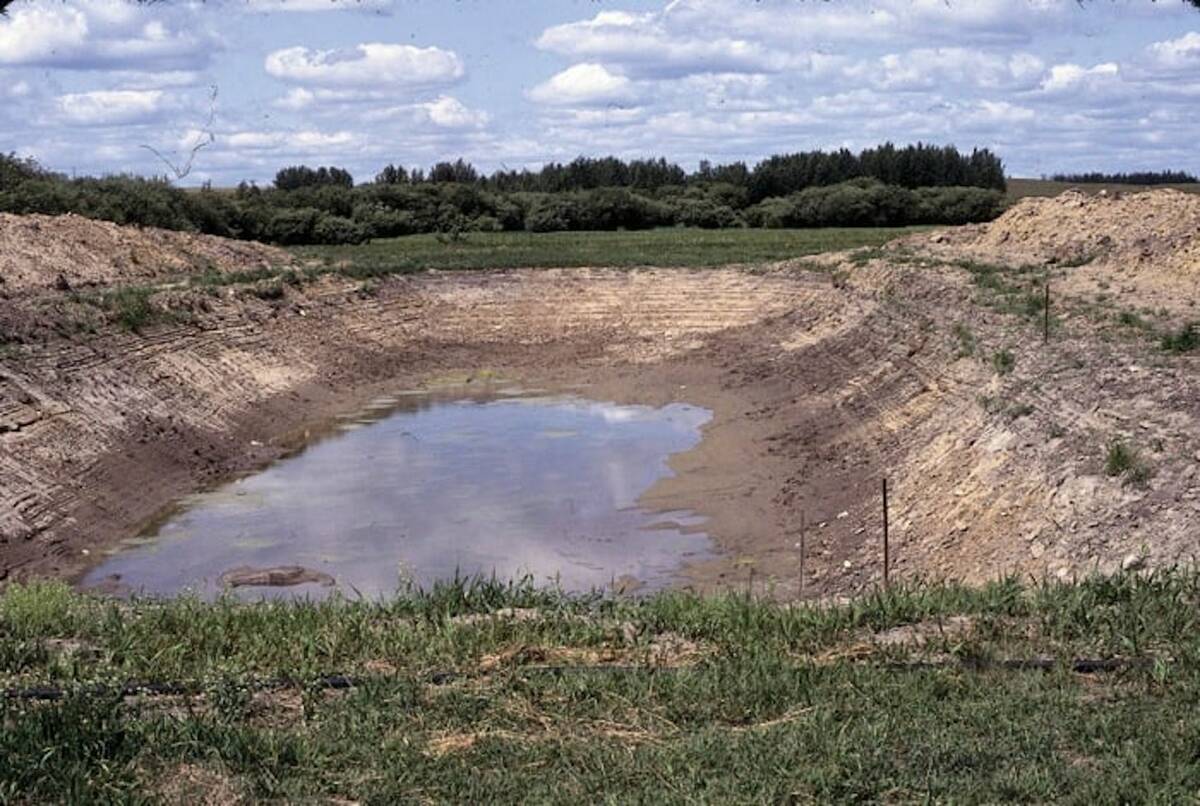OYEN, Alta. – Forty head of cattle have died so far in east-central
Alberta after eating poisonous plants.
The worst offender in this drought plagued season is a member of the
lily family called seaside arrow grass.
The plant looks like grass and grows in saline soils around sloughs.
When it becomes stressed due to frost or drought, it releases a deadly
poison that cause respiratory distress in cattle, said Lorne Cole,
range management specialist for the Special Areas.
Read Also

Dry summer conditions can lead to poor water quality for livestock
Drought conditions in the Prairies has led to an decrease in water quality, and producers are being advised to closely monitor water quality for their animals.
Cole suggested putting an electric fence around these areas to keep
cattle out because they will eat the grass if there is nothing else in
a dried out pasture.
Other poisonous plants found this summer include two-grooved milk vetch
and loco weeds.
The vetch grows up to 75 centimetres tall and has dark purple stems as
the plants mature. It produces a stench that is detectable from a
distance. Cattle may develop respiratory problems or paralysis in their
hind legs from eating the plant.
Death camas, which looks like a wild onion, has also been detected.
Besides toxic plants, high nitrate levels in feeds are causing
problems.
“The level of nitrates that is going to cause death is one percent,”
said provincial beef specialist Don Milligan. He suggests adding grain
to dilute the effect of excess nitrogen found in drought stressed
forages and cereals.
Producers who find dead stock often assume nitrate toxicity was the
cause. However, forage specialist Christoph Weder said the cause of
death is often acute bovine pulmonary emphysema, commonly called
atypical interstitial pneumonia (AIP).
This condition occurs when cattle eat a toxic level of poison found in
drought-stressed plants.
The poisons are converted in the rumen to a chemical that affects the
lining of the lungs.
To prevent this, producers should fill cattle with dry feed first
before turning them into new pasture.
Cattle should be allowed to graze for only a few hours at a time and
should receive dry feed supplements. They can be gradually acclimated
to the new feed over a week to prevent death losses.
“The rumen needs time to adjust, no matter what kind of feed you are
on,” said Weder.
Symptoms of nitrate poisoning are similar to AIP where cattle exhibit
anxiety, open mouthed and laboured breathing and frothing at the mouth.
They may refuse to move and if forced to walk, they may fall and die
within a few minutes.

















